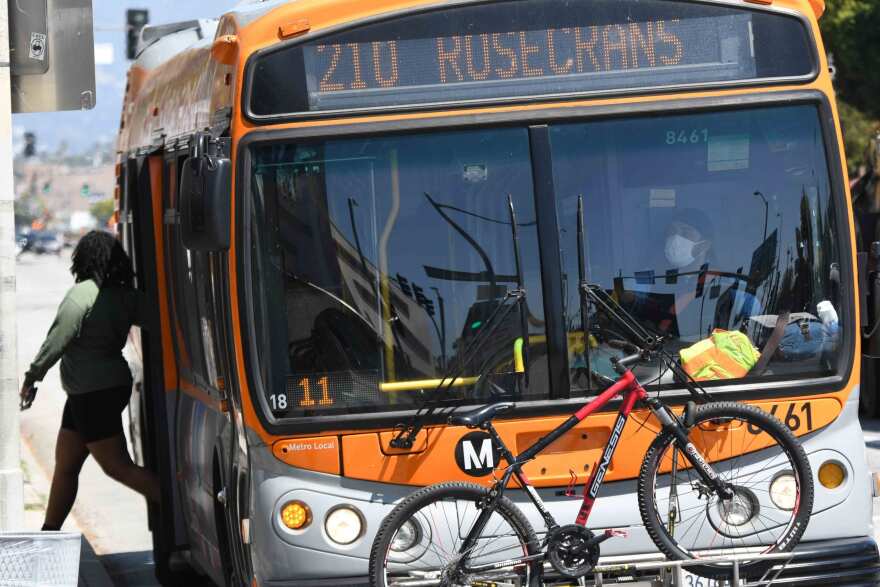Truth matters. Community matters. Your support makes both possible. LAist is one of the few places where news remains independent and free from political and corporate influence. Stand up for truth and for LAist. Make your year-end tax-deductible gift now.
LA Metro Is Restoring Service To Pre-Pandemic Levels And Wants To Hire 800 New Bus Drivers To Get There

Public transit ridership fell sharply in the early months of the pandemic, and many agencies cut service in response. That included the Los Angeles County Metropolitan Transportation Agency, which reduced its bus service by 20%.
But now, as COVID-19 cases fall and vaccinations rise, a sense of normalcy is returning to L.A. County — and L.A. Metro is working to restore service — and in some cases increase frequency on popular routes. To do that, they’ll need more people driving more buses across the county.
The agency has a goal to hire 800 new part-time bus operators by September, in line with its goal for full service restoration by that time. Metro’s current bus ridership is sitting at about 55% of normal.
As it worked to avoid layoffs last year, Metro put a freeze on hiring new part-time bus operators, said Patrice McElroy, interim chief human capital development officer for Metro.
We’re hiring bus operators! If you are interested in a career in transportation, consider applying today. Metro offers:
— LA Metro (@metrolosangeles) April 18, 2021
✔️ Paid trainings
✔️ Medical, dental and vision plan
✔️ Tuition reimbursements
✔️ Retirement plan options
...and more!
🔗 https://t.co/6TAXqRxCP9 pic.twitter.com/QYjShfyXHF
“We're hoping that with the lifting of the COVID-19 restrictions and going into the yellow tier… we want to be ready to ensure that we are able to take more and more riders as we reopen,” she said.
Metro currently employs about 3,360 bus operators, the majority of them full-time workers. The starting pay rate for bus drivers is $16.90/hour with incremental increases up to $26.01/hour, according to McElroy.
The new hires would join the local transit workers union, SMART. Metro is touting its benefits package, which includes health care coverage, paid time off, tuition reimbursement and a retirement plan.
“It's not just the general benefits,” McElroy added. “We want to offer a career for employees to be a part of this team and have a career in transportation.”
As it restores service, Metro will also be working to implement its NextGen Bus Plan, designed to incentivize more L.A. County commuters to choose the bus over a car by running more buses with fewer stops on many routes.
Nationwide, public transit ridership plummeted in the pandemic and remains low, but L.A. Metro has fared a little better than many other agencies, said spokesperson Brian Haas.
“A lot of transit agencies were down to 20, 30, 40% ridership during the pandemic at times. Metro’s been largely between 45 and 60% of its ridership. That tells us that people really rely on Metro to get around in L.A. County… whereas in other transportation agencies that may be more of a mode of choice for people, people here need us.”
For more information about the positions and how to apply, visit L.A. Metro's website.







